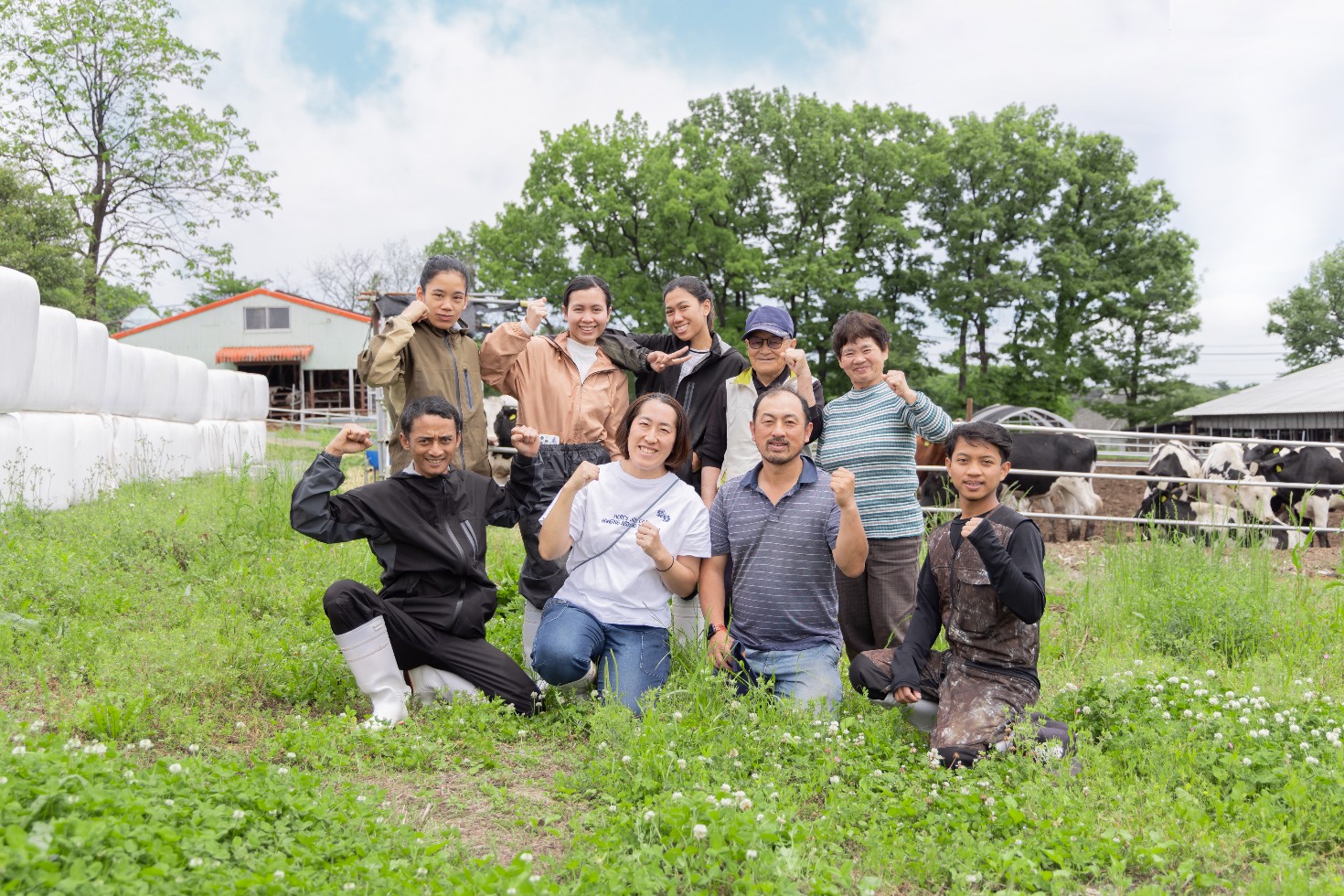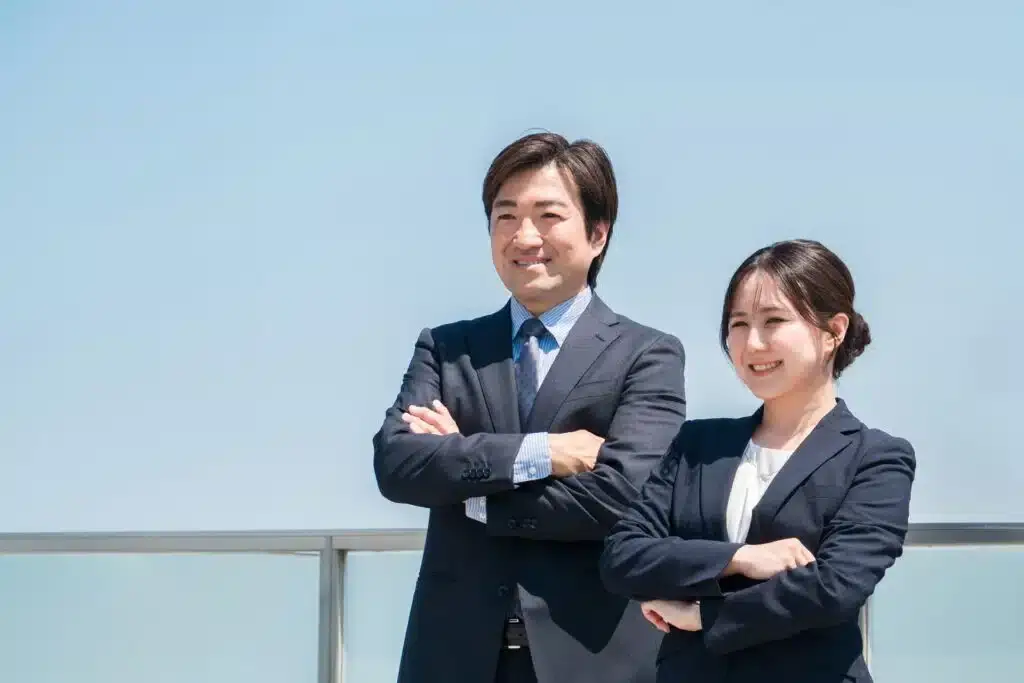The Evolution of Japan's Foreign National Acceptance Policy and a Cohesive Society: From Deregulation to Securing Foreign Talent

Japan’s society is facing structural challenges of a declining birthrate and an aging population, accompanied by a shrinking workforce. To address these challenges, Japan’s policies on foreign talent have reached a historic turning point. What was once a policy limited to specialized and technical fields has now evolved into a proactive strategy to secure talent across a broader range of sectors. At the heart of this policy shift is the Japanese Immigration Control and Refugee Recognition Act (hereinafter referred to as the “Immigration Act”). This law has undergone numerous amendments to adapt to the practical demands faced by Japan’s economic society. The once informal or so-called “side door” acceptance mechanisms have now transitioned to more transparent and systematic residency status systems, such as “Specified Skilled Worker” and “Highly Skilled Professional.” For business executives and legal professionals, accurately understanding the complex and dynamic evolution and current state of this legal system is an essential management issue to win the global competition for talent and achieve sustainable growth. This article first provides an overview of the historical changes in Japan’s foreign talent acceptance policy, then delves into the main residency statuses that form the core of the current system. Finally, it discusses the legal responsibilities and risk management essentials that companies must bear when employing foreign talent, including specific case studies.
The Historical Evolution of Japan’s Foreign Worker Acceptance Policy
The history of Japan’s policy on accepting foreign talent can be understood as a process of gradually bridging the gap between economic realities and official policy directives through legislative amendments. The movements from the late 1980s, in particular, have been crucial in forming the foundation of today’s system.
In the late 1980s, Japan was in the midst of the so-called bubble economy, facing a strong yen and a severe labor shortage. This was an urgent issue for small and medium-sized manufacturers, among others, who struggled to secure a workforce. However, the government policy at the time did not officially permit the acceptance of unskilled foreign workers. The Immigration Control and Refugee Recognition Act, revised in 1989 and enforced in 1990 (Heisei 2), emerged to fill the gap between this policy and the actual demand. Although the amendment did not overtly allow the acceptance of foreign workers, it created a new residency status called “Long-Term Resident,” which was mainly targeted at Japanese descendants living in South America and other regions, and generally did not restrict work activities. As a result, many Japanese descendants worked in manufacturing, effectively functioning as an acceptance of labor force. This method of securing a substantial workforce while maintaining the facade of not officially accepting non-professional and technical workers has been described as an acceptance through a “side door” or “back door.”
Subsequently, in 1993, the “Technical Intern Training Program” was established. The legal basis for this program, the Japanese Technical Intern Training Act, states its purpose as “to promote international cooperation by transferring skills to developing regions through human resource development” (Article 1 of the Japanese Technical Intern Training Act). Furthermore, the Act clearly stipulates that “technical intern training shall not be conducted as a means of adjusting the supply and demand of labor” (Article 3 of the Japanese Technical Intern Training Act), with the official stance being solely on international contribution. However, in reality, it has functioned as an important mechanism to supplement the workforce in industries suffering from labor shortages. The discrepancy between the program’s objectives and its actual implementation has been a source of various issues over the years.
A significant shift in this situation occurred with the amendment of the Immigration Control and Refugee Recognition Act in 2018 (enforced in April 2019). This amendment is regarded as a historic watershed in Japan’s foreign worker policy. To confront the intensifying labor shortage head-on, the government shifted its previous policy and created a new framework to accept foreigners not as “trainees” or “interns” but explicitly as “workers.” This is the “Specified Skilled Worker” residency status. The system aims to accept foreign talent who can immediately contribute in specific industry sectors, marking a significant turn from Japan’s “side door” policy to an official “front door” policy of accepting labor force.
Explanation of the Current System: Key Residency Statuses Companies Should Utilize in Japan
The current system for accepting foreign talent in Japan reflects the history of its development and consists of a complex structure with multiple coexisting programs. For companies to select the appropriate system that meets their needs, it is essential to accurately understand the legal framework and personalityistics of each. Here, we will explain the “Technical Intern Training Program” and the “Specified Skilled Worker Program,” which serve as the foundation for securing labor, as well as the “Highly Skilled Professional System” designed to attract talent with advanced expertise.
The Foundation of Labor Force Security: Comparing Japan’s Technical Intern Training Program and Specified Skilled Worker Program
The Technical Intern Training Program and the Specified Skilled Worker Program are often confused, but they fundamentally differ in their objectives, legal bases, and operations. As previously mentioned, the Technical Intern Training Program, based on Japan’s Technical Intern Training Act, aims for “international contribution.” Therefore, no specific skill level is required before entering Japan, and the expectation is for trainees to learn skills in Japan and take them back to their home countries. On the other hand, the Specified Skilled Worker Program, based on the Japanese Immigration Control and Refugee Recognition Act, has the direct purpose of “alleviating domestic labor shortages.” Consequently, foreign nationals who are accepted under this program must possess a certain level of expertise and skills, as well as Japanese language proficiency, and are expected to contribute immediately as skilled workers.
This difference in objectives significantly affects how the programs are operated. One of the most important differences is the possibility of changing jobs. Under the Technical Intern Training Program, the purpose is to learn skills at a specific company based on a training plan, and therefore, changing jobs is generally not permitted. In contrast, the Specified Skilled Worker Program allows workers to change jobs within the same industry sector if they seek better conditions. This implies that for companies, providing a favorable work environment to attract and retain foreign talent becomes even more crucial.
Furthermore, the Japanese government has enacted a legal reform in 2024 (Reiwa 6) to abolish the Technical Intern Training Program and establish a new “Nurturing Employment” system aimed at securing and developing human resources. This new system intends to resolve the discrepancy between the objectives and realities of the Technical Intern Training Program and to create a career path that facilitates a smooth transition from Nurturing Employment to the Specified Skilled Worker status. It indicates that Japan’s foreign talent policy is evolving in a more practical and systematic direction.
The main differences between the two systems are summarized in the table below.
| Aspect | Technical Intern Training Program | Specified Skilled Worker Program |
| Objective of the Program | International contribution through skill transfer to developing regions | Alleviating labor shortages in specific industry sectors |
| Legal Basis | Japanese Technical Intern Training Act | Japanese Immigration Control and Refugee Recognition Act |
| Required Skill Level | Not required in principle | Certain skill level and Japanese language proficiency required (immediate contribution) |
| Possibility of Changing Jobs | Not allowed in principle | Allowed within the same industry sector |
| Duration of Stay | Up to 5 years | Type 1: Total of 5 years, Type 2: No renewal limit |
| Family Accompaniment | Not allowed | Type 1: Not allowed, Type 2: Possible if requirements are met |
| Quota for Acceptance | Limited according to company size, etc. | Generally no limit, with expected acceptance numbers set (except for construction and caregiving sectors) |
Details of the Japanese Specified Skilled Worker System
The Japanese Specified Skilled Worker system is divided into two categories: “Specified Skilled Worker No.1” and “Specified Skilled Worker No.2”.
“Specified Skilled Worker No.1” is a residence status for foreigners who engage in work requiring considerable knowledge or experience in specific industrial fields. The total period of stay is capped at a maximum of 5 years, and family accompaniment is not permitted. The targeted fields include 16 industries such as nursing care, construction, food and beverage manufacturing, and the food service industry, which are particularly suffering from severe labor shortages. Accepting organizations (companies) are legally obligated to provide support for foreign workers to ensure they can work stably and smoothly. This support includes professional, daily, and social life assistance and is specifically defined in the “Support Plan for Specified Skilled Worker No.1 Foreign Nationals”. The comprehensive support covers 10 items, including pre-arrival guidance, transportation at the time of entry and departure, assistance in securing housing, conducting life orientation, accompanying during public procedures, and providing opportunities to learn Japanese. This represents a significant legal and operational responsibility for companies.
On the other hand, “Specified Skilled Worker No.2” is a qualification for foreigners who engage in work requiring skilled expertise in specific industrial fields. While it demands a higher level of skill than No.1, there is no limit on the renewal of the period of stay, and if the requirements are met, accompaniment by a spouse and children is also possible. This opens the path to long-term residency and offers companies the significant advantage of securing skilled personnel over an extended period.
Attracting Highly Skilled Professionals: The Japanese Highly Skilled Professional (HSP) System
Separate from the Specified Skilled Worker system, which aims to secure labor force, the Japanese government has been particularly focused on the “Highly Skilled Professional” (HSP) system, designed to attract top-level talent with specialized and technical skills from around the world. Introduced in 2012 as a points-based system, it was formalized as an official residency status with the revision of the Immigration Control Act in 2014 (Heisei 26). The purpose of this system is to secure top-level talent that contributes to the revitalization of Japan’s academic research, economy, and the creation of innovation.
The system is divided into three categories based on the applicant’s activities: “Advanced Academic Research Activities,” “Advanced Specialized/Technical Activities,” and “Advanced Business Management Activities.” Certification is conducted through a points-based system, with points awarded for “educational background,” “professional experience,” “annual income,” “age,” “research achievements,” “Japanese language proficiency,” and other criteria. Those who reach a total of 70 points are recognized as “Highly Skilled Professional (HSP) No. 1.”
Foreign nationals with the HSP residency status are granted significant preferential measures not available to other residency statuses, as follows:
- Permission for complex residency activities: For example, it is possible to conduct research activities at a university while simultaneously managing a related business.
- Uniform grant of a “5-year” residency period: The longest residency period under the law is granted.
- Significant relaxation of permanent residency requirements: Normally, 10 years of residency is required for permanent residency applications, but as an HSP, it becomes possible after just 3 years of continuous activity. In particular, if the points exceed 80, you may apply after only 1 year of activity.
- Spouse’s employment: The spouse is allowed to engage in employment activities within a certain scope, even without meeting educational or professional history requirements.
- Accompaniment of parents and domestic workers: If certain annual income requirements are met, it is permitted to bring parents or domestic workers from the home country.
These systems demonstrate that Japan’s foreign talent policy is not Monolithic but is constructed as a strategic portfolio to meet the needs of different layers of the economy. In corporate management strategies, the choice of which system to utilize should be a critical decision determined by the objective of talent acquisition, whether for creating innovation or maintaining the workforce on the ground.
Legal Responsibilities and Risk Management for Companies Employing Foreign Talent in Japan
While employing foreign talent can bring significant opportunities to companies, it also comes with legal responsibilities and risks that must be adhered to. Merely checking residence cards is insufficient; it is essential to establish a comprehensive compliance system that addresses both immigration law and labor-related laws.
Immigration Law Compliance: The Risk of the Crime of Promoting Illegal Employment
One of the criminal penalties that companies must be particularly cautious of is the “crime of promoting illegal employment” as defined in Article 73-2, Paragraph 1 of Japan’s Immigration Control and Refugee Recognition Act. This crime applies to those who engage in business activities and employ individuals to work in capacities not permitted by their residence status or hire illegal residents. Importantly, the scope of this crime is not limited to direct employment relationships.
In this regard, the Tokyo High Court’s decision on September 22, 1993 (1993), provides important guidance. The court ruled that for the crime of promoting illegal employment to be established, “a person in a dominant position in relation to the foreign national in the context of business activities must use that position to instruct or allow the foreign national to engage in illegal employment activities.” This means that even if there is no direct employment contract, a company can be held liable if it effectively controls a foreign national and allows them to work illegally. Companies must also pay attention to the employment status of foreign talent hired by subcontractors or service providers.
Labor-Related Law Compliance: The Principles of Equal Treatment and Duty of Care for Safety
Foreign workers are protected under Japanese labor laws such as the Labor Standards Act and the Labor Contract Act, just like Japanese workers. Companies should pay particular attention to the “principle of equal treatment” and the “duty of care for safety.”
The “principle of equal treatment” is established in Article 3 of the Japanese Labor Standards Act, which stipulates that “employers shall not discriminate in wages, working hours, or other working conditions on the basis of nationality, creed, or social status.” This principle was specifically challenged in the “Debar Processing Service case” (Tokyo District Court, December 6, 2011), where a company deducted higher dormitory fees from the salaries of foreign technical intern trainees than from Japanese employees. The court ruled this as an unreasonable discrimination based on nationality, violating Article 3 of the Labor Standards Act. This judgment clarifies that it is legally unacceptable to create unreasonable differences based on nationality, not only in wages but also in welfare benefits such as dormitory fees.
The “duty of care for safety” is defined in Article 5 of the Japanese Labor Contract Act, which requires employers to “take necessary care to ensure that workers can work safely, securing their life and health, in accordance with the labor contract.” When employing foreign workers, this duty may require special consideration of language barriers. A notable case is the “Narco incident” (Nagoya District Court, February 7, 2013), where a Chinese trainee with limited Japanese language skills was injured by machinery during work. The court found the company failed to provide adequate safety training, thus violating the duty of care for safety. In particular, the company had an obligation to explain work procedures and risks in a language the foreign workers could understand (in this case, Chinese) and to confirm their understanding. This case suggests that companies have a responsibility to implement specific safety measures tailored to the personalityistics of foreign talent, such as multilingual safety manuals and interpreter-assisted training.
As these cases illustrate, the legal risks for companies employing foreign talent in Japan extend from mere administrative procedures for verifying residence status to criminal penalties and significant civil liabilities for damages. Japanese courts recognize the unique vulnerabilities of foreign workers due to language and cultural differences and tend to demand a higher standard of care from companies.
Conclusion
Japan’s foreign worker acceptance policy has transitioned from a stance centered on regulation and management to a new phase of strategically securing the necessary talent and building a coexisting society, in response to the country’s economic and social demands. This significant paradigm shift offers many companies facing labor shortages important opportunities for business continuity and growth. However, to maximize these opportunities, it is essential to deeply understand the personalityistics of the various residence status systems, such as the Technical Intern Training Program, the Specified Skilled Worker visa, and the Highly Skilled Professional visa, and to select the system that best fits the company’s management strategy. At the same time, this change demands more complex and sophisticated legal compliance from companies, ranging from immigration law to labor regulations. Smooth acceptance and integration of foreign talent requires not just recruitment activities but also the establishment of a robust internal system that integrates legal affairs, labor management, and safety protocols.
Monolith Law Office has a proven track record of providing a wealth of legal services related to the themes discussed in this article to numerous clients within Japan. Our firm is home to a diverse group of professionals, including English-speaking experts with foreign legal qualifications, capable of offering comprehensive support for the increasingly complex legal challenges associated with employing foreign talent. We are committed to robustly supporting your company’s global talent strategy from a legal perspective.
Category: General Corporate





















